Overview:
The French town of Calais was under English rule from 1347 until 7 January 1558. But, the production of Calais farthings did not commence until the reign of Henry V and ended during the reign of Henry VI.
In 1363 the town was made a staple port and it had become a parliamentary borough sending 2 Members of Parliament to the House of Commons in England by 1372.
It cost almost a 1/5th of all the revenue collected in England to maintain the town as an English possession. But, with peace came prosperity, and it is precisely during these years, which cover the 'Annulet,' the 'Rosette-Mascle' and part of the 'Pinecone-Mascle' coinages of Henry VI, that the Calais mint enjoyed its period of greatest prosperity and, in fact, issued the majority of the coins then in circulation in England.
There are two "tell-tale" signs to distinguish Henry V farthings from those of his predecessor, Henry IV.
First - the coins of Henry IV have a lock of hair to the left of the king's face standing away from the head. This is not the case with coins of Henry V.
Second - the formation of the inner circles on the obverse. Coins of Henry IV are formed of many small dots which often appear fused together. On coins of Henry V there are fewer dots and these appear as short strokes at an angle to the radial direction (see the photo for clarification).
Three different mintmarks were used in Calais during the reign of Henry VI:
- Annulet issue (1422-271)
- Rosette-Mascle issue (1427-301)
- Pinecone-Mascle issue (1430-341)
allowing for the dating of farthings. Full flan coins are difficult to find. This makes collecting farthings from this period an interesting and challenging task.
ANNULET ISSUE
On 16 May 1422 there were isssued 'to William Lackford, Richard Buckland's man, all irons, etc necessary to coin money in Calais (including) one for silver farthings2' and the issuing of new coins commenced on 20 July 14223. The minting of the Annulet issue ended in April 14274.
Date: 1422- April 1427
Mint: Calais
Type: ANNULET ISSUE
Diameter: 10mm
Weight: 0.21g (3¾ grains5)
Purity: 0.925 silver
Obverse: +hEnRIC xREX xAnGL'
Annulets at neck. Thin neck. Mintmark is a "cross pommee."
Reverse: VIL LA: CAL IS:
"Long Cross" with three pellets in each quarter.
Reference(s):
W.A.1
S.1852
N.1438
Scarcity: Extremely Rare
Guide Price:
£200 (Fine)
£425 (Very Fine)
Note: In SCMB of March 1970, only 2 examples of these farthings were
known. One was in the British Museum. This author knows of at
least two others: one was in the Ivor Buck collection and the
other was found by a detectorist in 2004. It is still fair to say
that these are extremely rare coins.
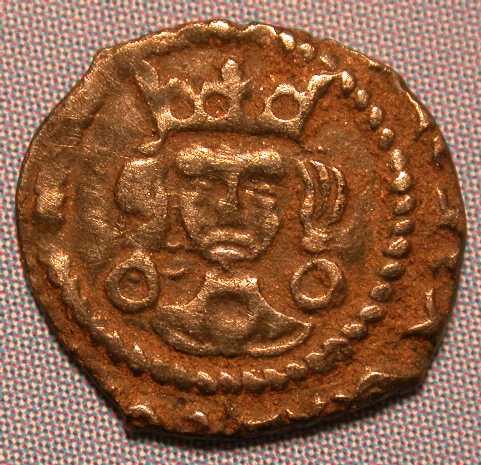
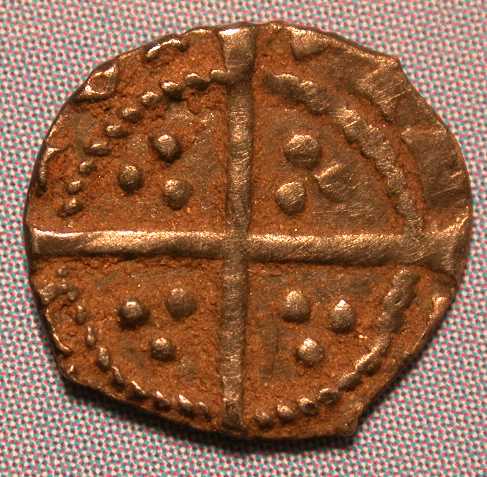
Date: 1422- April 1427
Mint: Calais
Type: ANNULET ISSUE
Diameter: 10mm
Weight: 0.21g (3¾ grains5)
Purity: 0.925 silver
Obverse: +hEnRIC'xREX xAnGL'
Annulets at neck. "Bib" chest. Mintmark is a "cross pommee."
Reverse: VIL LAx CAL IS'x
"Long Cross" with three pellets in each quarter.
Reference(s):
W.A.2
S.1852
N.1438
Scarcity: Extremely Rare
Guide Price:
£200 (Fine)
£425 (Very Fine)
Date: 1422- April 1427
Mint: Calais
Type: ANNULET ISSUE
Diameter: 10mm
Weight: 0.21g (3¾ grains5)
Purity: 0.925 silver
Obverse: +hEnRIC REX.AnGL[']
Annulets at neck. "Bib" chest. Mintmark is a "cross pommee."
Reverse: VIL LAxx CAL ISxx
"Long Cross" with three pellets in each quarter.
Reference(s):
W.A.3
S.1852
N.1438
Scarcity: Extremely Rare
Guide Price:
£200 (Fine)
£425 (Very Fine)
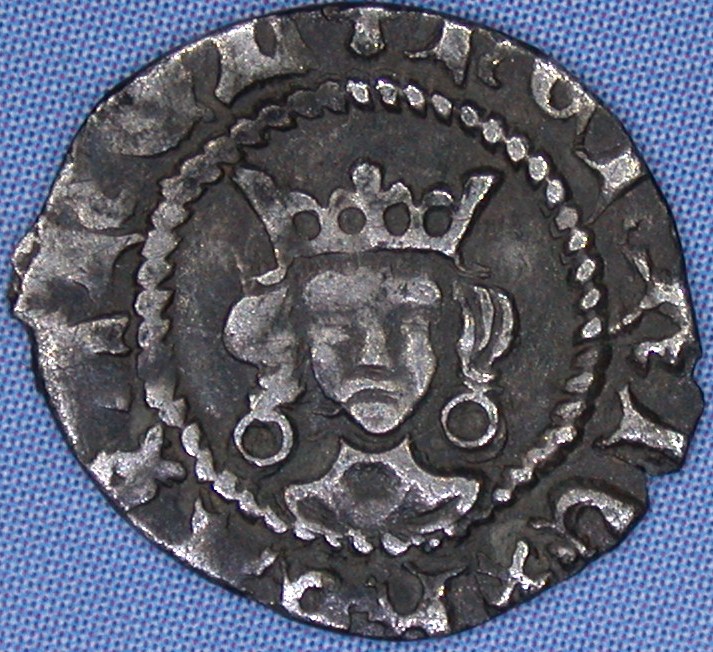
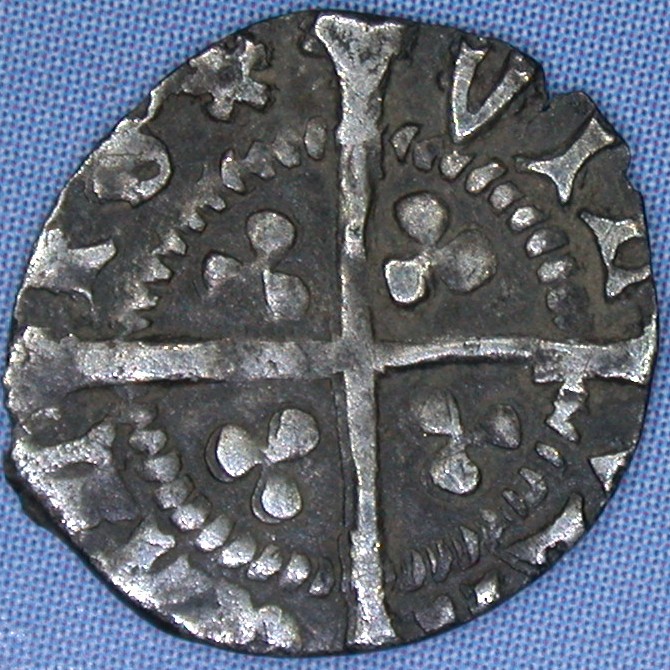
Date: 1422-1430
Mint: Calais
Type: ANNULET / ROSETTE-MASCLE MULE
Diameter: 10mm
Weight: 0.21g (3¾ grains5)
Purity: 0.925 silver
Obverse: ++hEnRIC'xx REX xx AnGL
Annulets at neck. "Bib" chest. Mintmark is a "cross pommee."
Reverse: VIL LAt CAL IS|
"Long Cross" with three pellets in each quarter.
Reference(s):
W. Unlisted
S.-
N.-
Scarcity: Extremely Rare
Guide Price:
£200 (Fine)
£425 (Very Fine)
Note: Muling between coin issues was not uncommon as dies were
expensive to make and so they were used until they were too
worn (even then a die could be re-cut to make features bold
again for further use).
Muling is particularly noticable in the coinage of Henry VI as there
are a number of discernibly different issues over the reign.
One scenario for this mule is that the new Rosette-Mascle
dies were delivered to the Calais mint, but the die for the Annulet
Issue obverse had not yet worn out. So the aging Annulet
obverse die was paired with a new Rosette-Mascle reverse die.
ROSETTE-MASCLE ISSUE
Richard Buckland, the Treasurer of Calais and the Warden of the Calais mint, had the unusual burden of having to pay for the dies used to make coins at the Calais mint. As a result of this arrangement, records exist of the number of dies supplied to Calais between 29 May 1427 and 27 February 1430 through 16 seperate indentures and covering the entire period when Pinecone-Mascle issue farthings were produced.
Farthing dies were supplied in two of these indentures: on 30 November 1427 for 3 pyles (dies for the 'heads' of a coin) obverse and 9 cruses (dies for the 'tails' of a coin); and on 14 January 1430 for 8 pyles and 18 cruses. Based on these records there were a total of 11 pyles and 27 cruses used in Calais during the entire Pinecone-Mascle issue of farthings at Calais.6.
Date: 1427-1430
Mint: Calais
Type: ROSETTE-MASCLE ISSUE
Diameter: 10mm
Weight: 0.21g (3¾ grains5)
Purity: 0.925 silver
Obverse: +hEnRIC|REXtAnGL
Rosette and Mascle in legend. Mintmark is a "cross pommee."
Reverse: VIL tLA CAL IS|
"Long Cross" with three pellets in each quarter. Rosette and Mascle
in legend.
Reference(s):
W.RM.1
S.1873
N.1456
Scarcity: Very Rare
Guide Price:
£175 (Fine)
£375 (Very Fine)
PINECONE-MASCLE ISSUE
There is no record of farthing dies being issued between 1430-31.6.
Date: 1430-1434
Mint: Calais
Type: PINECONE-MASCLE ISSUE
Diameter: 10mm
Weight: 0.21g (3¾ grains5)
Purity: 0.925 silver
Obverse: +hEnRICQREXtAnGL
Pinecone and Mascle in legend. Mintmark is a "cross pommee."
Reverse: VIL tLA CAL ISQ
"Long Cross" with three pellets in each quarter. Pinecone and Mascle
in legend.
Reference(s):
W.PM.1
S.1873
N.1456
Scarcity: Very Rare
Guide Price:
£175 (Fine)
£375 (Very Fine)
LEAF-TREFOIL ISSUE
On 13 December 1435, Richard Buckland the Mint Master for Calais, was authorised to be supplied with a large number of dies necessary to coin money including 60 dies for the minting of halfpennies and farthings, for which he paid 4d for each farthing die 7. These dies were not put into immediate use due to the ongoing war with the Duke of Burgundy and the Foreign Roll records state that no coins of any denomination were struck between 30 March 1435 and 10 February 1436 at Calais8.
In 1437 Robert Whittingham, as Master of the Calais mint, reveived 3 pyles (dies for the 'heads' of a coin) and 12 cruses (dies for the 'tails' of a coin) for farthings9.
On 29 January 1441 Buckland's successor, Robert Whittingham, was authorized to receive 3 obverse and 12 reverse dies for farthing production at the Calais mint10.
Even though farthing dies were issued in 1435 and in 1441, there are currently no known Leaf-Trefoil farthings from the Calais mint.
1 WHITTON, CA. 1938-41: 'The Heavy Coinage of Henry VI' BNJ 23,
p. 412
2 Proceedings and Ordinances of the Privy Council, ii, 332.
3 WITHERS, P & WITHERS, BR. 2004: 'The Halfpence and Farthings of
Henry VI: A Re-assessment' BNJ 74, p. 52
4 POTTER, WJW. 1955/57: 'The Heavy Groats of Henry VI' BNJ 28,
p. 303
5 SEABY, BA. (ed) 1948: Notes on English Silver Coins 1066-1648
to help collectors in their classification (London, Seaby). pp 87.
6 ALLEN, M. 2007: "The Proportions of the Denominations in English
Mint Outputs, 1351-1485" BNJ 77, p. 197-8
7 PARSONS, HA. 1934/37: 'Remarks on the Silver Coinage of VI' BNJ
22, p. 10
8 Numismatic Chronicle, 1911, p. 173.
9 WALKER, AS. 1920/21: 'The Calais mint, A.D. 1347-1470' BNJ 16,
p. 92
10 ALLEN, M. 2007: "The Proportions of the Denominations in English
Mint Outputs, 1351-1485" BNJ 77, p. 197-8
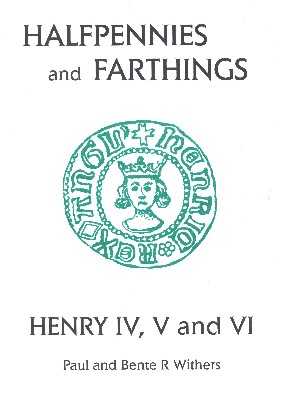

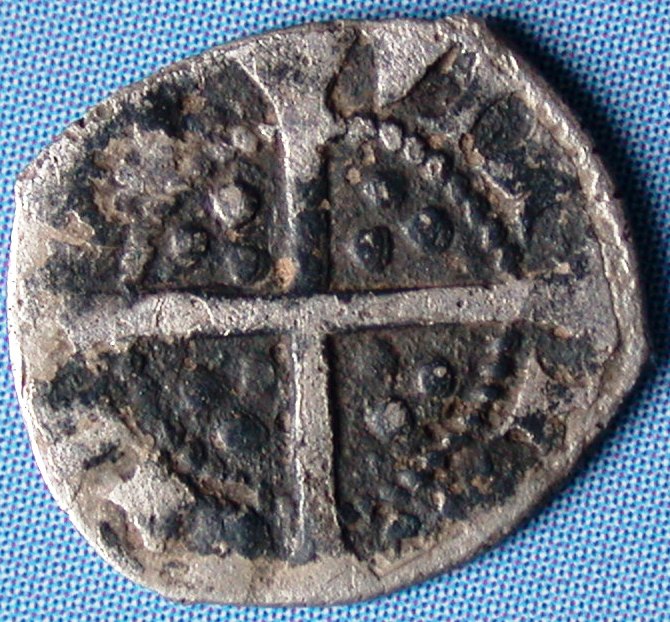


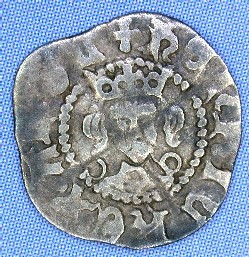
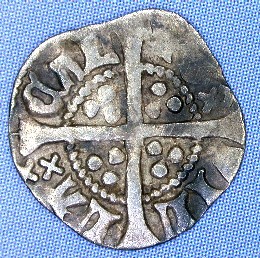


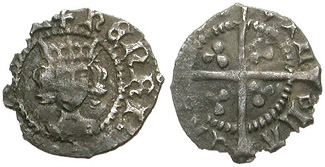

![Validate my RSS feed [Valid RSS]](../valid-rss.png)